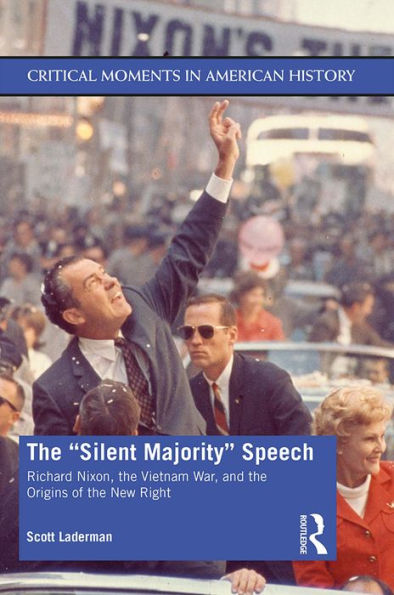The "Silent Majority" Speech treats Richard Nixon’s address of November 3, 1969, as a lens through which to examine the latter years of the Vietnam War and their significance to U.S. global power and American domestic life.
The book uses Nixon’s speech – which introduced the policy of "Vietnamization" and cited the so-called bloodbath theory as a justification for continued U.S. involvement in Southeast Asia – as a fascinating moment around which to build an analysis of the last years of the war. For Nixon’s strategy to be successful, he requested the support of what he called the "great silent majority," a term that continues to resonate in American political culture. Scott Laderman moves beyond the war’s final years to address the administration’s hypocritical exploitation of moral rhetoric and its stoking of social divisiveness to achieve policy aims. Laderman explores the antiwar and pro-war movements, the shattering of the liberal consensus, and the stirrings of the right-wing resurgence that would come to define American politics.
Supplemental primary sources make this book an ideal tool for introducing students to historical research. The "Silent Majority" Speech is critical reading for those studying American political history and U.S.–Asian/Southeast Asian relations.
The "Silent Majority" Speech treats Richard Nixon’s address of November 3, 1969, as a lens through which to examine the latter years of the Vietnam War and their significance to U.S. global power and American domestic life.
The book uses Nixon’s speech – which introduced the policy of "Vietnamization" and cited the so-called bloodbath theory as a justification for continued U.S. involvement in Southeast Asia – as a fascinating moment around which to build an analysis of the last years of the war. For Nixon’s strategy to be successful, he requested the support of what he called the "great silent majority," a term that continues to resonate in American political culture. Scott Laderman moves beyond the war’s final years to address the administration’s hypocritical exploitation of moral rhetoric and its stoking of social divisiveness to achieve policy aims. Laderman explores the antiwar and pro-war movements, the shattering of the liberal consensus, and the stirrings of the right-wing resurgence that would come to define American politics.
Supplemental primary sources make this book an ideal tool for introducing students to historical research. The "Silent Majority" Speech is critical reading for those studying American political history and U.S.–Asian/Southeast Asian relations.

The "Silent Majority" Speech: Richard Nixon, the Vietnam War, and the Origins of the New Right
194
The "Silent Majority" Speech: Richard Nixon, the Vietnam War, and the Origins of the New Right
194eBook
Related collections and offers

Product Details
| ISBN-13: | 9781351858946 |
|---|---|
| Publisher: | Taylor & Francis |
| Publication date: | 08/06/2019 |
| Series: | Critical Moments in American History |
| Sold by: | Barnes & Noble |
| Format: | eBook |
| Pages: | 194 |
| File size: | 5 MB |
